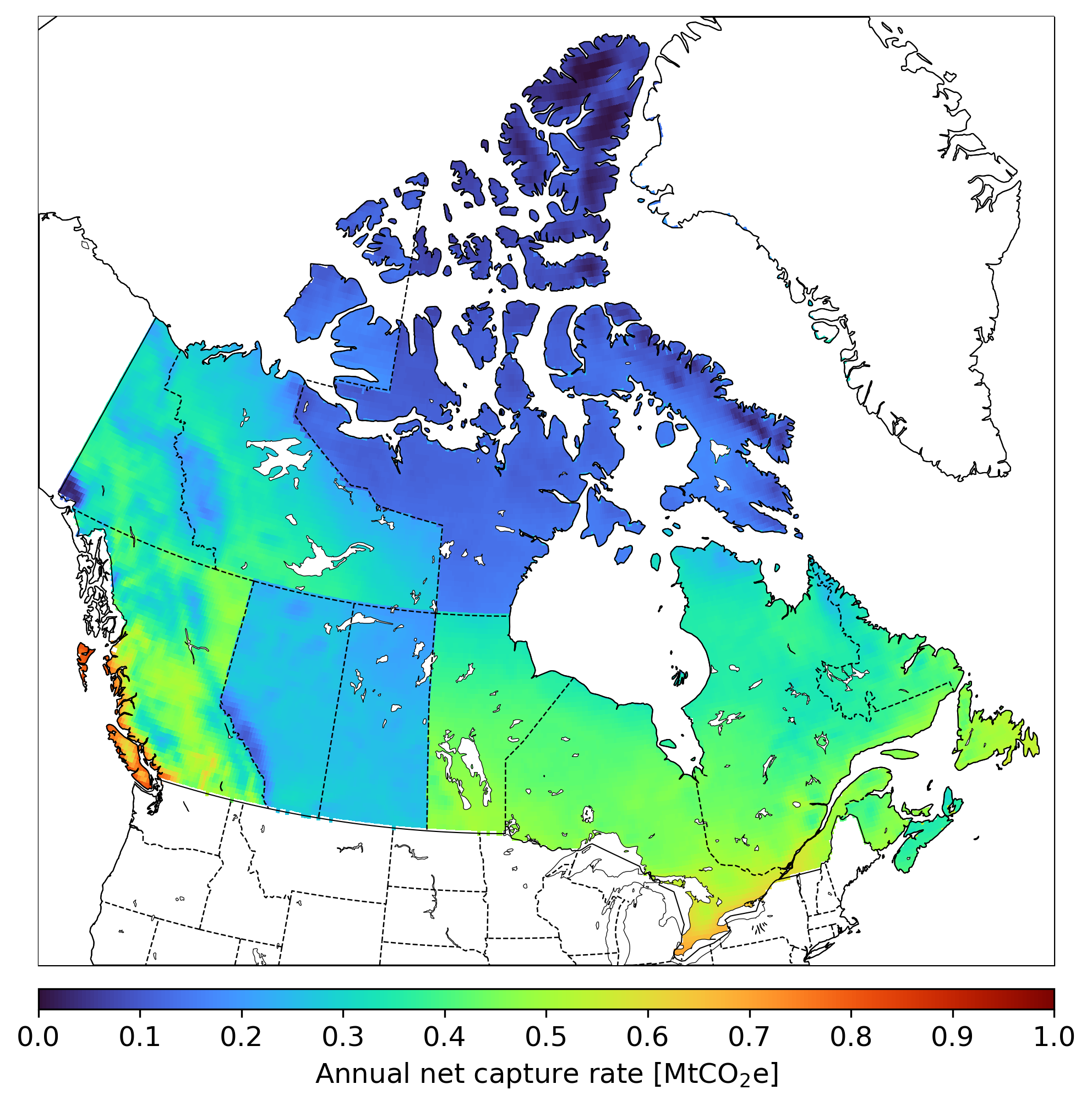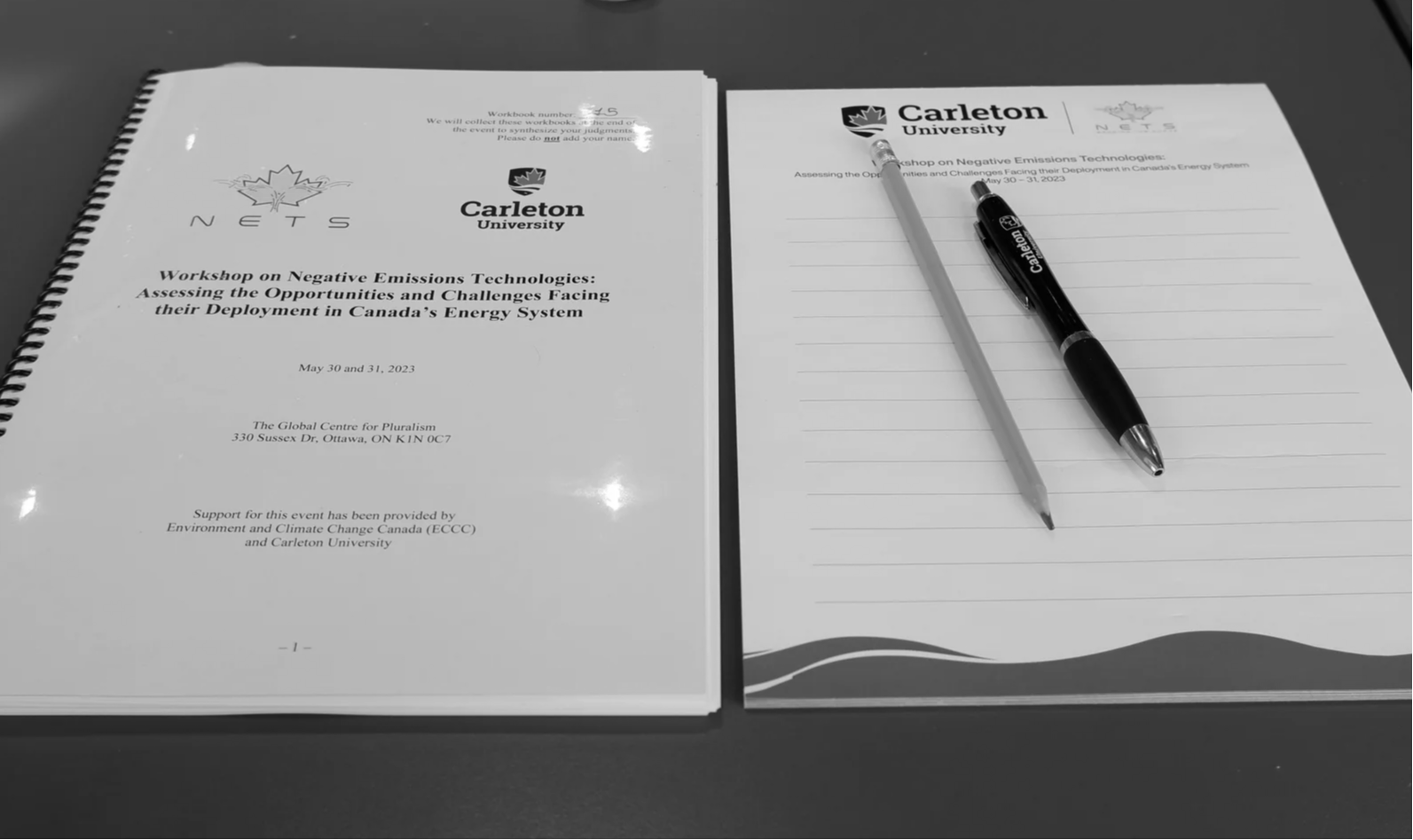Operational Capability of Direct Air Capture Plants Impacted by Ambient Environmental Conditions

Liquid Solvent DAC:
Annual net removals for a nominal 1 Mt liquid-solvent direct air capture facility. Annual net
removals are the sum of hourly capture rates for 2019 climate data, and emissions associated with provincial-level grid emission factors and national-level upstream methane
leakage rates (except for British Columbia, Alberta, and Saskatchewan, where provincial level methane-leakage rates are available). The facility is assumed to have a natural-gas fired calciner, comprising approximately 70% of energy consumption, with the remaining loads electrical and grid-connected.
Introduction to the Research Project
This project will develop and publish spatially and temporally detailed models of the Canadian energy system that incorporate Negative Emissions Technologies (NETs). To achieve this goal, we will develop a suite of detailed chemical process models for NETs, and integrate these into a larger, pan-Canadian energy system optimization model to better represent the role and impacts of NETs on the net-zero transition.

By organically integrating NETs into detailed energy system models, this framework will identify optimal locations for NET deployment in the near-term, at the lowest risk and cost for businesses, government, and society. This will be done by including representations of the energy system, water resources, pipeline infrastructure, industrial up-scaling, and air quality impacts. Modeling results will help develop business cases for NET deployment, estimating their resource and material requirements in the process to ensure their sustainability, and generating estimates of their benefits for and costs to Canadians. Finally, these models will yield insights on the optimal cost and technical performance of new NETs: knowing which cost thresholds, system sizes, carbon removal efficiencies, and operational characteristics might accelerate their deployment would provide Canadian industry and government with benchmarks to target.
Unlike previous efforts that focus on a more constrained scope and rely on modeler judgment, the models and data used here will be socialized with relevant stakeholders, who will inform model development and iterative refinement through highly structured workshops that elicit their expert judgment. Towards the conclusion of the project, a suite of powerful, open-source, and transparent decision-making tools will be made available to them. This project complements and advances Canada’s leadership in NETs by improving the models and information available to the business community as they pursue prudent and sustainable deployment of NETs in Canada. It also helps Canada achieve its net-zero emission targets.
